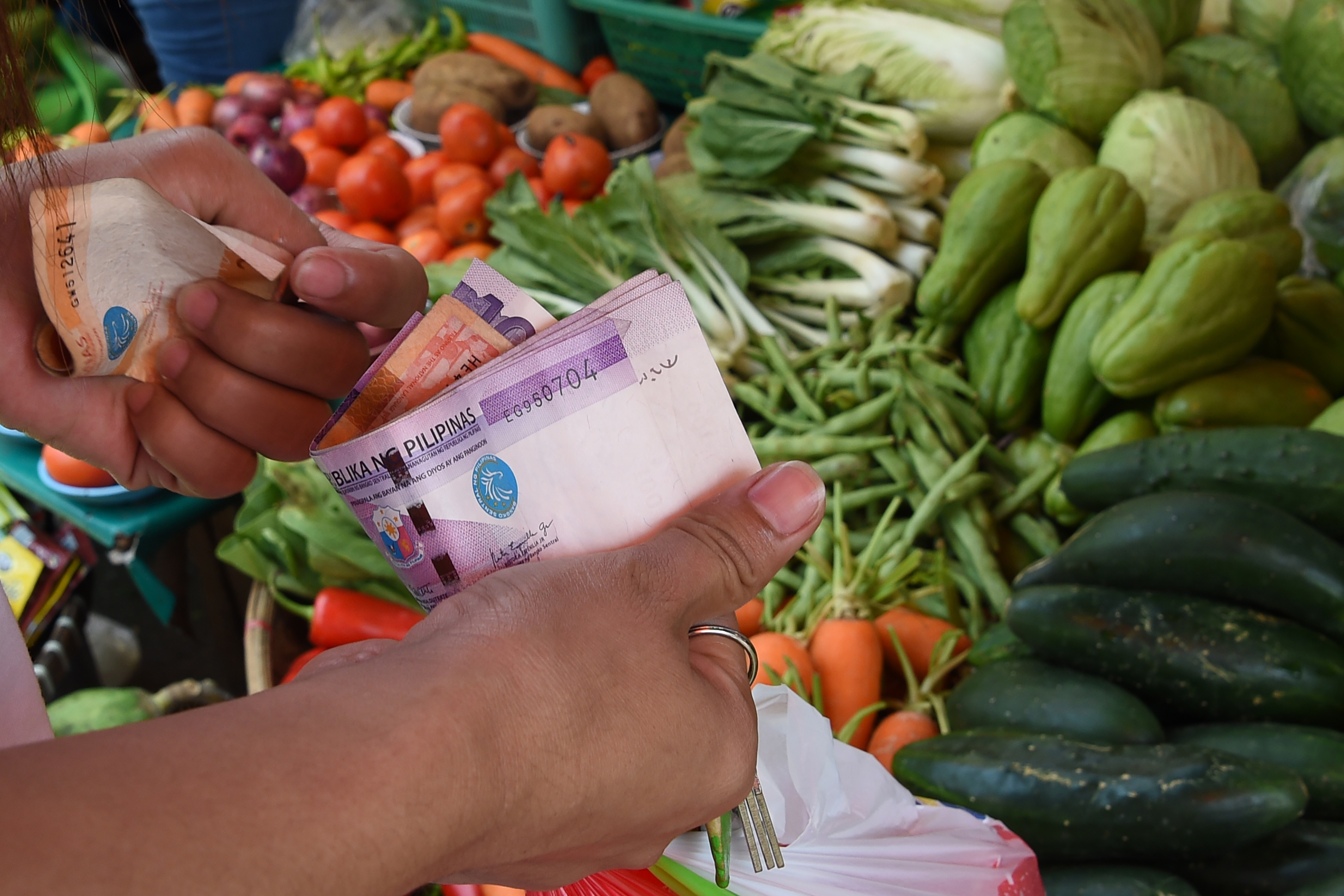July inflation eases but threats remain for rest of the year
Headline inflation for July returned to the official target range for the first time this year at 4 percent year-on-year, even as more expensive fish and vegetables due to bad weather last month forced Filipinos to shell out more money to buy food, the government reported on Thursday.
At the end of the first seven months, the rate of increase in the prices of basic commodities averaged 4.4 percent, still above the Bangko Sentral ng Pilipinas’ (BSP) goal of keeping it within a manageable 2-4 percent.
National Statistician Dennis Mapa told a press conference that the biggest contributor to the softer nationwide rate was the slower transport inflation of 7 percent in July from 9.6 percent in June.
For instance, tricycle fare and oil price hikes were slower than in June, while domestic air fare posted a bigger deflation or year-on-year drop in prices, Mapa said.
Food inflation, however, inched up to 5.1 percent last month from June’s 4.9 percent mainly as vegetable prices increased 5 percent year-on-year, reversing the 2.7-percent decline posted in the previous month.
Fish inflation also rose to 9.3 percent in July from 8.7 percent in June.
Mapa said that besides the low fish and vegetable supply resulting from the heavy downpours experienced last month, sellers also blamed higher fuel prices which jacked up their delivery costs.
As for meat, which drove the inflation spike at the start of the year due to the African swine fever crisis, average prices climbed by 16 percent year-on-year last month, slower than the 19.2 percent in June.
But Mapa said the softer meat inflation was mostly due to lower chicken prices.
Pork prices were almost flat month-on-month, with the decline in pork meat with bones in Metro Manila amounting to only about P1.30 a kilo.
Outside Metro Manila, the same pork cut only shed a few centavos to P290.65 from P291 a month ago.
These food price hikes affected the poor more, since food had a bigger share in their consumer price index (CPI) basket, such that the inflation rate for the bottom 30-percent income households inched up to 4.4 percent year-on-year in July from June’s 4.3 percent.
From January to July, inflation among the poorest Filipinos averaged 4.8 percent, higher than the headline rate.
Meanwhile, the central bank welcomed the slight dip in the CPI, saying this was consistent with its assessment that inflation could settle close to the high-end of the target range of 2-4 percent over the near term. It expects inflation rate to decelerate back to within the target by year-end as the impact of government supply-side measures take effect.
“The balance of risks to the inflation outlook remains broadly balanced over the policy horizon,” the BSP said, explaining that the uptick in international commodity prices due to supply-chain bottlenecks and the recovery in global demand could lend upside pressures on inflation.
“However, the emergence of new coronavirus variants and delays in easing lockdown measures are seen to pose downside risks to both demand and inflation,” it warned.
ING Bank Manila senior economist Nicholas Mapa said the decline in the inflation rate could be short lived.
“Given the heft of the food subsector in the CPI basket, we could see inflation pressures elevated in the second half despite extremely soft domestic demand with the impending ECQ and ongoing recession,” he said.
